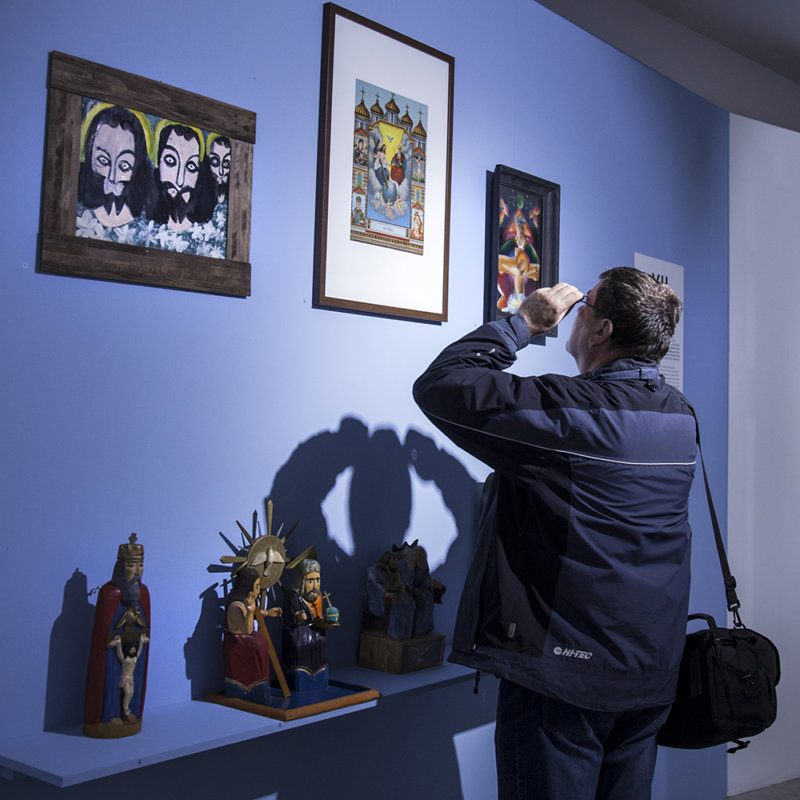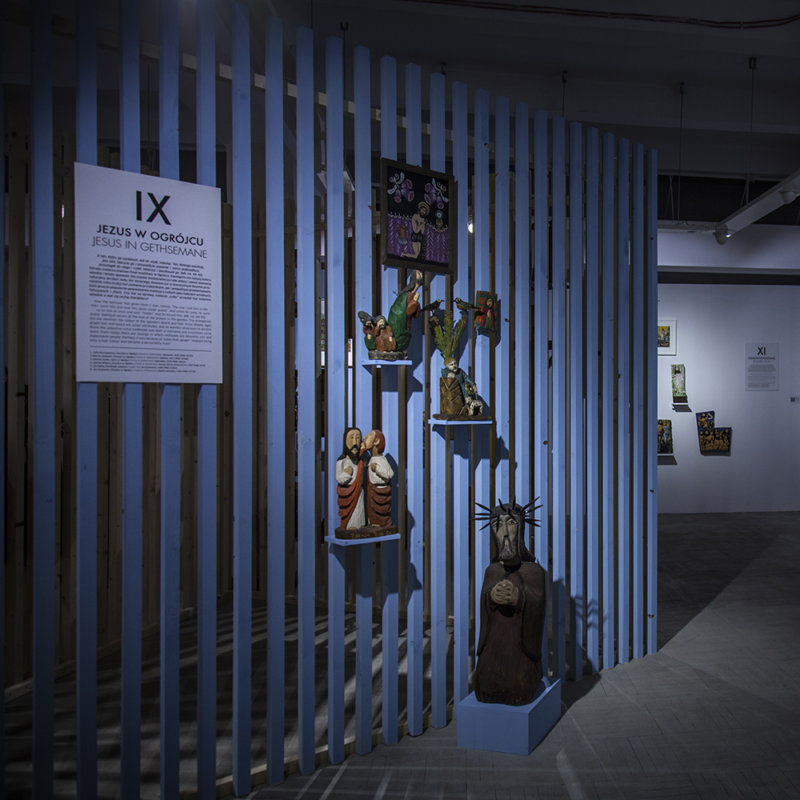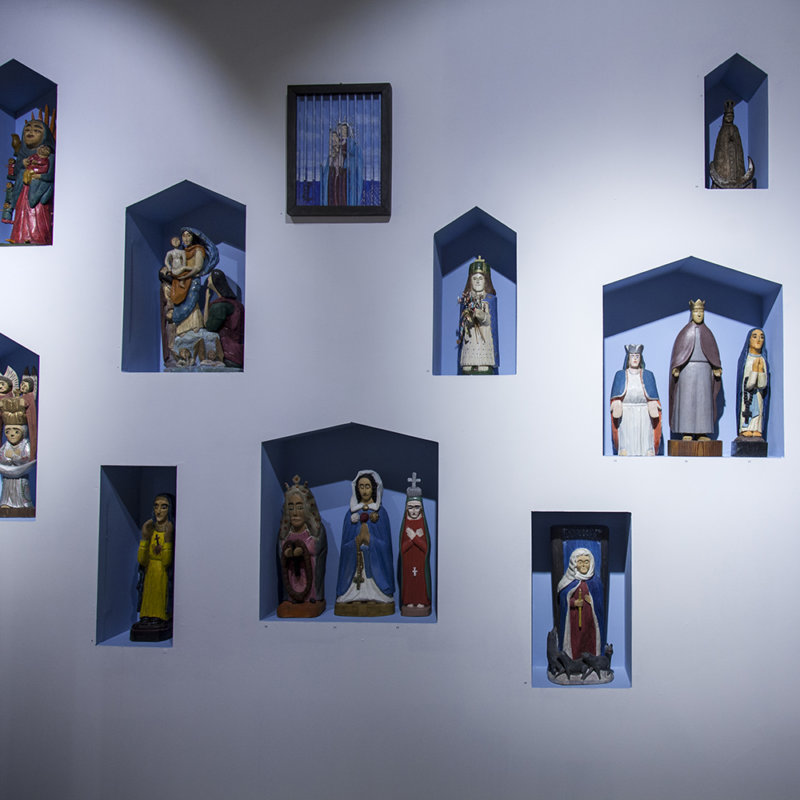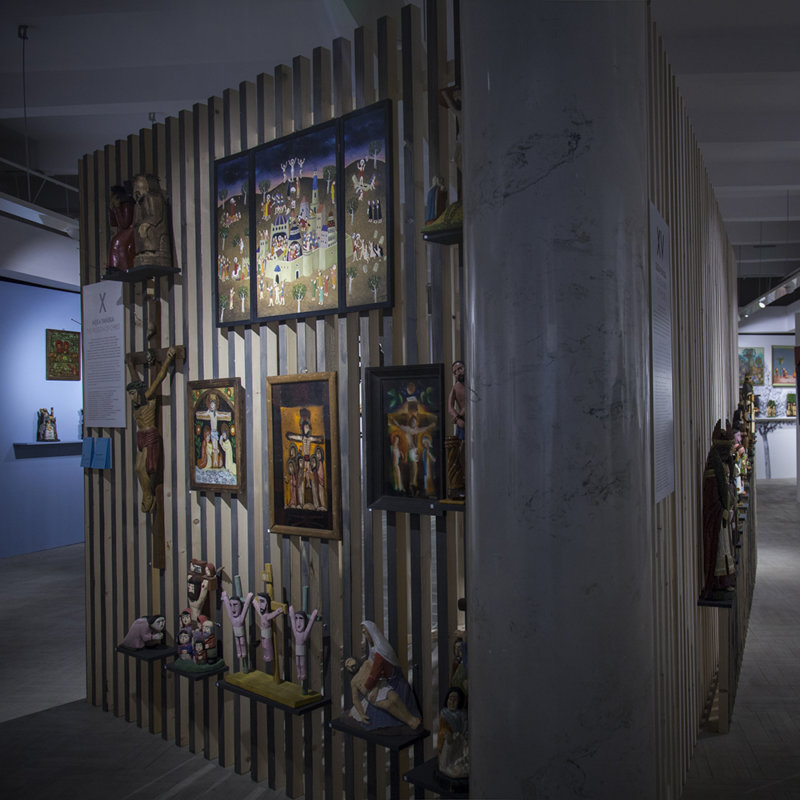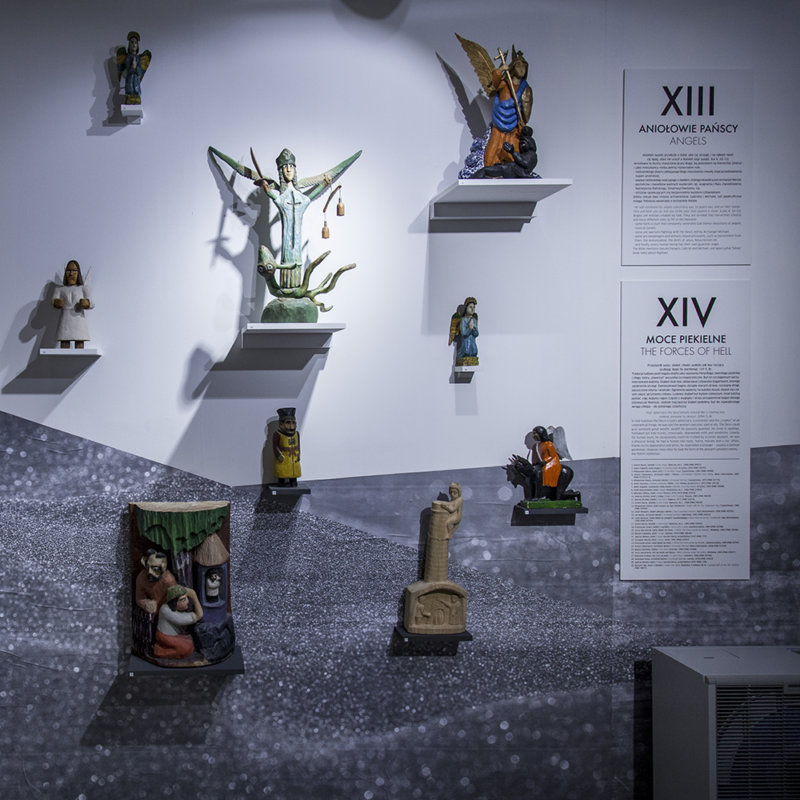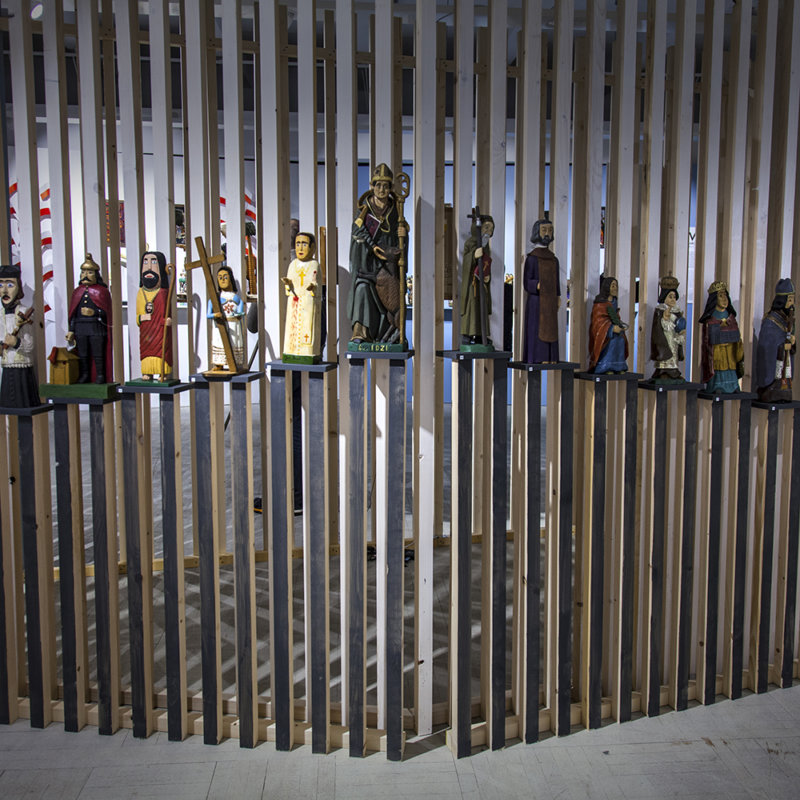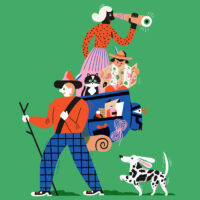The peasants’ interpretation of the Bible and their unique perspective of the world gives very creative results. Visitors to the exhibitions will learn why it rains when you kill a spider, why swallows have red feathers on their heads, or why the stork eats frogs. Those beliefs and also religious practices reflect in a rich yet simple non-professional, folk, and art-brut genres of art.
The artworks created by the excluded, the alienated and the poor should be perceived as a result of human experiences and effects of overcoming daily challenges. Human fate encapsulated in a piece of wood, marked on paper or painted on a glass pane loses its locality, its provincial quality. A piece of work an author “produced” for themselves unexpectedly reveals its timeless qualities, drawing the attention of people from all over the world. This is why this art is universal.
The Warsaw collection of non-professional and folk art dates back to the 1950s and 1960s, the times when Professor Ksawery Piwocki was the museum’s director. Pieces other experts rejected due to their low aesthetic value, enraptured and delighted Piwocki, a remarkable historian of art. By creating the very first and for a long time the largest collection of art brut and folk art in Poland, he started the fashion of collecting non-professional art.











